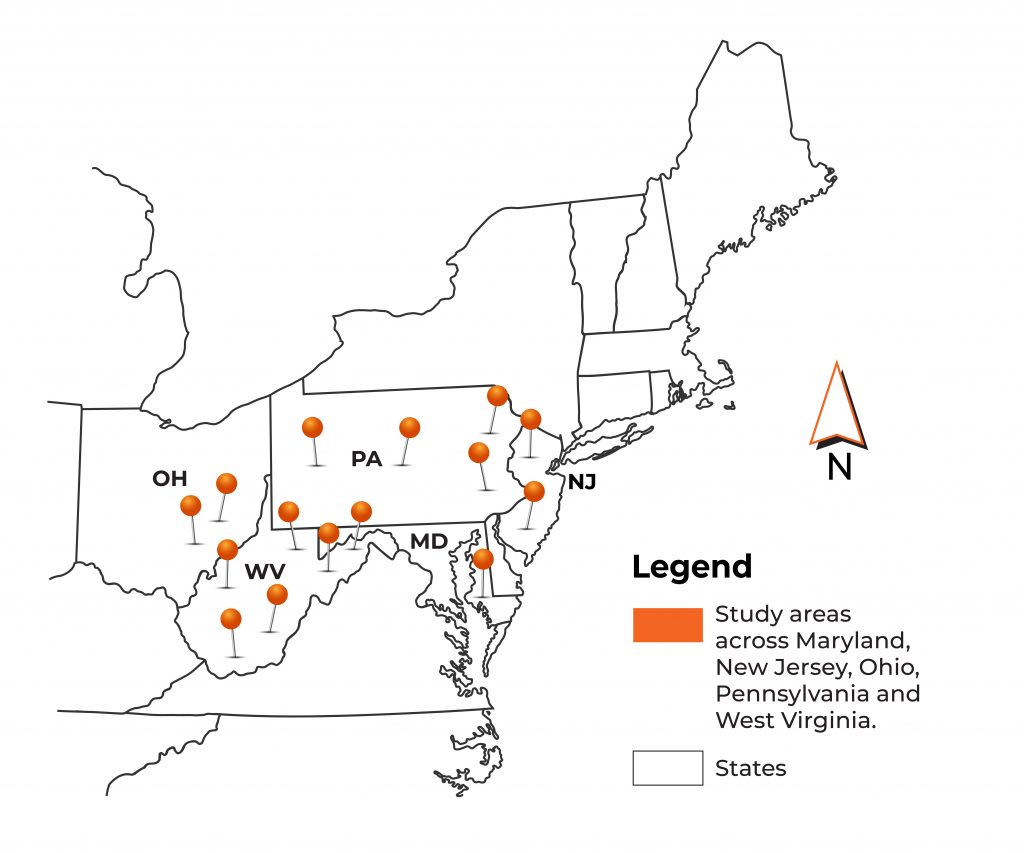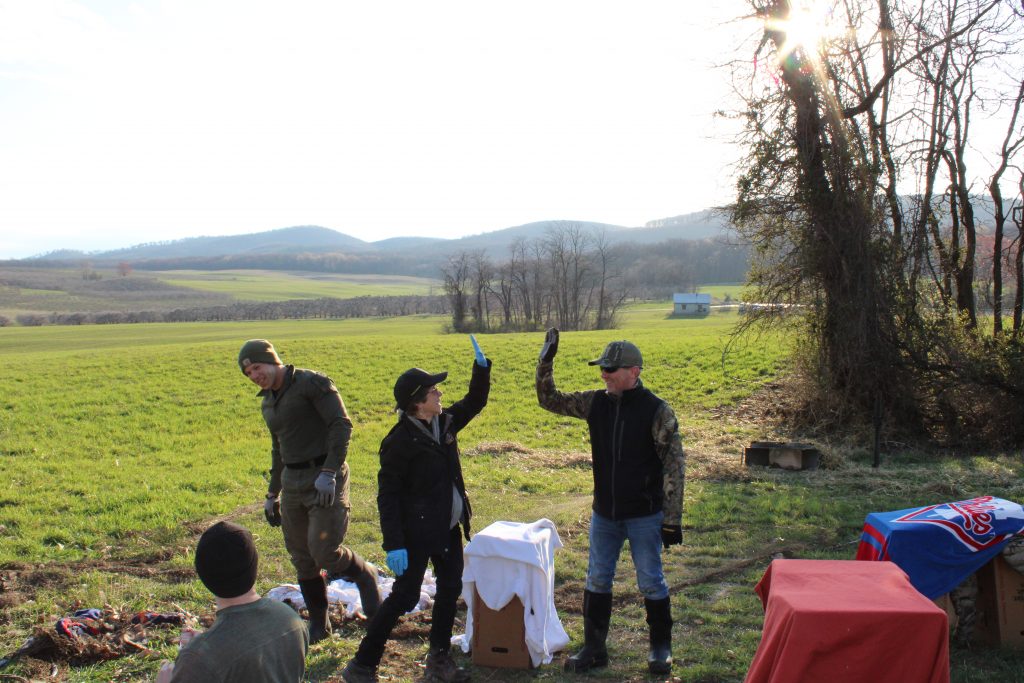The Mid-Atlantic Wild Turkey Research Collaborative
The United States is seeing an unprecedented amount of wild turkey research in recent years. While many studies are justifiably focused on the Southeast, where long-term declines are most evident, a major effort is also underway where “North” meets “South” – an area often referred to as the Mid-Atlantic.
Turkey population trends vary significantly across the Mid-Atlantic region. In certain areas, including some suburbia, turkey numbers are at record highs. In other parts, turkey populations have fluctuated from record high periods to generally stable levels over the last 20 or so years. Most concerning are areas where long-term decreases in poult production are noted, with overall population declines from earlier high levels.
To better understand this complex and dynamic nature of turkey populations, the Pennsylvania Game Commission, in cooperation with Penn State University and the University of Pennsylvania’s Wildlife Futures program, launched an ambitious four-year wild turkey field study in 2022. Recognizing the benefits of a multi-state approach, Maryland and Ohio began research in 2023, followed by New Jersey and West Virginia in 2024. Ohio State University and West Virginia University are integral to the efforts, particularly in their respective states. State and local NWTF chapters are providing important financial support in some, if not all, states.

Objectives vary somewhat among the participating states, but researchers are focused on some commonalities. All states are looking at “vital rates,” such as hen survival, nesting success and poult survival. But answers to more complex questions also interest cooperating states. For example, what is the impact of weather, predation and disease on hen survival and productivity in this region? Does habitat and other landscape characteristics influence these relationships? Through this collaborative approach, data can be examined at various scales (study areas, states, and the entire region) and allow researchers to unravel the complex relationships that are impacting turkey populations.
In some states, such as Pennsylvania, Ohio and West Virginia, graduate students from the cooperating universities are working with state wildlife agencies to address state-specific aims.
In other states, such as West Virginia, results from this study are compared to research conducted decades ago to figure out how turkey populations changed over time. And in other states, like Maryland, this effort is providing critical data, information never before collected. In all cases, the results will provide revisions to existing turkey population models for each state and help guide turkey management throughout the region for years to come.
Researchers in each state are conducting field work on two, five-study areas that represent different landscape level habitat types and turkey population densities. In each study area, a minimum of 25 hens were fitted with backpack-style GPS transmitters and leg bands. Biological samples were also taken.
Key to this collaborative approach is that all states are using the same methods, protocols and transmitters. This provides consistency in data collection and allows for comparisons across states. The transmitters provide GPS locations of the bird and accelerometer data, which offer both a detailed account of what habitat the bird is using and its activity patterns within that habitat. Additionally, the crew can easily review data in the field, enabling them to promptly determine a bird’s condition.
Crews have equipped 855 hen turkeys with radio transmitters since 2022 (405 in Pennsylvania, 130 in Maryland, 151 in Ohio, 118 in West Virginia, and 51 in New Jersey). By the project’s end, that number will increase considerably. More than 40 technicians monitor the hens year-round, downloading GPS and movement data, deciding causes of death, and investigating nest fate and clutch size. Some states, like Pennsylvania, conduct additional vegetation analysis to assess habitat impacts on nest success. Weather data within 1 kilometer of each nest helps gauge weather impacts on nest success. Following hatching, crews calculate poult survival by conducting brood counts at four weeks of age, as most poult mortality occurs within the first four weeks.
Once data are collected, university researchers and state biologists work together to find out how various factors are interacting to influence hen survival, productivity and movements. This collaborative study will result in an unprecedented large sample size across the region. The increased knowledge about turkeys in the region will allow biologists and land managers to refine management recommendations, which ultimately should equate to healthier and more productive turkey populations in the future.

